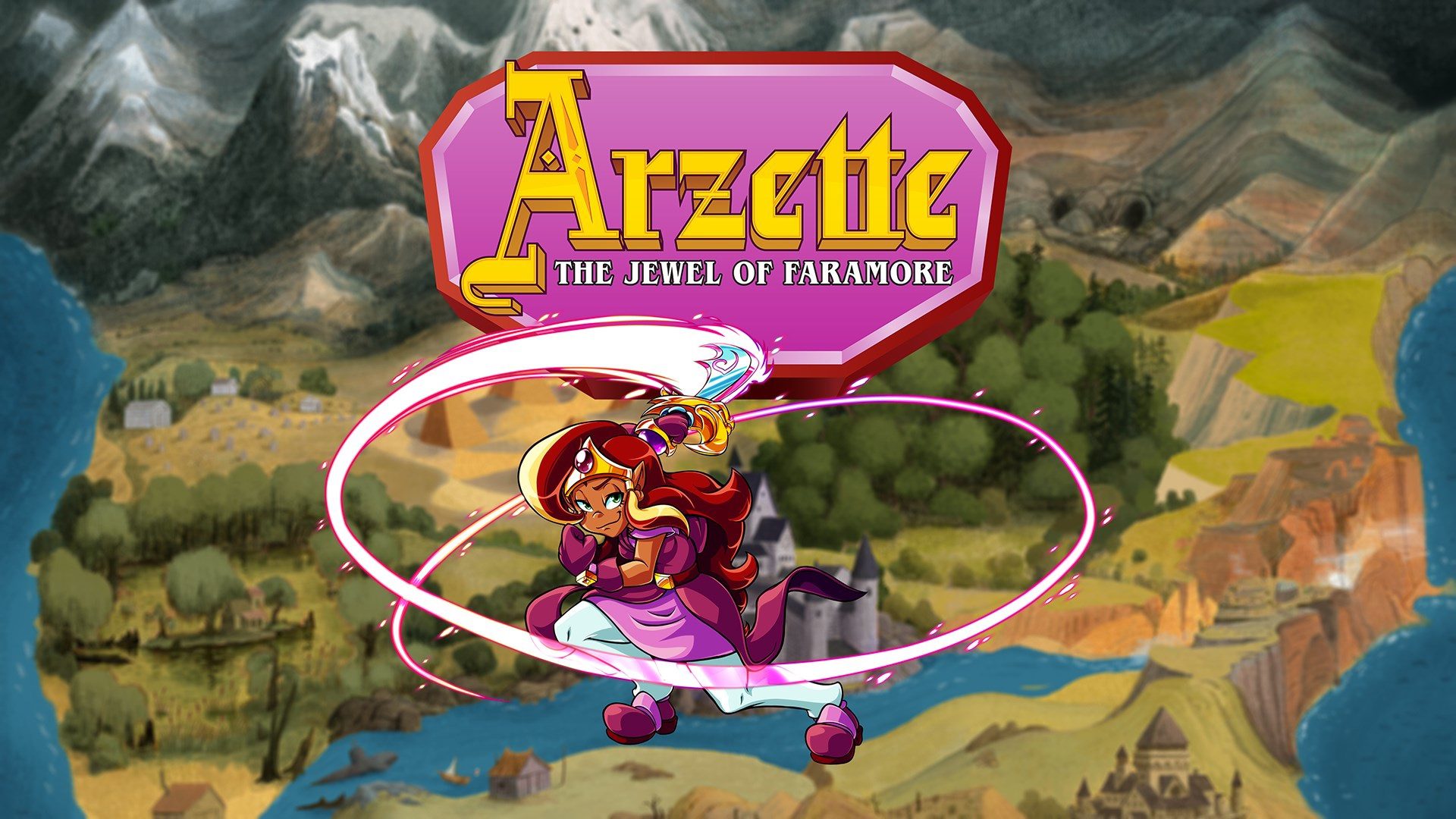The infamous Legend of Zelda games created for the Philips CD-i have weaseled into the collective internet consciousness in more ways than one. From the days of early YouTube, where discovering the new worst game of all time was always a big event, to the eccentric comedy of Morshu edits (“Lamp oil, rope, bombs” anyone?), these little games that could not are persisting despite their similarly inevitable fall into obscurity.
With Arzette: The Jewel of Faramore, the ideas buried deep beneath the jokes can prove themselves to a modern audience. The CD-i games were always funny, some may say ahead of their time. Flow-wise they were fascinating as well, though unfortunately running between maps, completing fetch quests, and unlocking new abilities to progress on the 2D plane—a sort of alpha stage of modern metroidvanias—would always end up with a lot of unnecessary tedium, coupled with gameplay that did not do it any favors.
Remakes, remasters, reevaluations and adaptations of all sorts have been a pillar of entertainment in the past decade or two, and, as draining as it may be at times, I am thankful for projects like Arzette. It takes all the best lessons from its inspirations while providing a rock-solid gameplay foundation they sorely lacked. With it in place, everyone can now realize that the animations being so silly was good, actually, and running around in weird environments is enough sometimes, as long as it is not annoying.
There is not much here to impress anyone mechanically: a jump, an attack, crouching, and other movement methods popular in the modern platformer scene. Their biggest strength is that they are all proper, and that is, realistically, all the game needs. Though you mostly hit baddies with a sword, the real crux of the experience is hitting characters with a sword, which initiates wonderfully over-animated conversations. You explore to find ways to explore more efficiently so that in turn you can see more of the world and its inhabitants.
In that department, Arzette excels. By ditching the Zelda moniker the style gains clarity, and with it an unmistakable, unique quality. The world here is cohesive, and all of its eccentricities are not only charming but also genuinely inspiring. It has vibrant colors, unique level layouts and world progression, and animation frames that could only exist when you free yourself of the idea that camera positioning is real and can hurt you.
Admittedly, certain techniques are overused. A crazy zoom-in on a character’s face is shocking at first, but by the nth time, it loses its luster. Thankfully, these quickly get counteracted by a different, insane NPC interaction soon after. Not all cutscenes are made equal, but their sheer amount makes it so that there is always something exciting around the corner. The game’s short runtime (around five hours) coupled with its rapid pace makes for a fever dream of an experience.
Although it does slow down when attempting a completionist route, which defines this style of exploration. Not only does every level hide a set amount of special collectibles, but characters Arzette helps on her journey pop up in the hub town to provide additional objectives that upgrade carry capacity. This is a sort of meaningless reward (something that could be improved in future installments) as I never found myself running out of any resources.
The process of discovering them is the real reward. Plenty of clever hiding spots behind walls await to be found, with hints of their location barely peeking through the detailed background art. Occasionally, even if you were to spot one, the tools required to get past certain barriers may not yet be in your possession, leading to quite a bit of backtracking. Surprisingly, this never feels like much of an issue.
Maybe it is the sense of progression you feel by unlocking shortcuts through these areas, or maybe it is just the general charm oozing from every visual and every sound of Arzette, but it has the kind of world that I just loved exploring. Every voice actor fully commits to their intonation, and the soundtrack is like a collection of excellent, modernized renditions of beloved 8-bit tracks from a game that never existed. Each piece feels familiar, yet blows you away with an impressively dynamic instrumental flair.
There is more to this game than meets the eye. Sure, you could watch all the silly dialogue online, or listen to its soundtrack in a vacuum, but in context and with a controller in hand, Arzette: The Jewel of Faramore transforms into a sort of learning experience with a strong personality of its own. A very entertaining one, might I add. What we have here already is a truly unique experience in the modern landscape.
I cannot help but feel that something was set in motion with this release, and whether it will be the next Arzette game or an altogether different project inspired by it, I know something even more special is on the horizon. All thanks to what many consider to be the worst games of all time. Just shows that those who don’t know history are doomed to repeat it, and those that do can create a funny frog man that brings a smile to many faces. Feel free to quote me on that.
Mateusz played Arzette: The Jewel of Faramore on PC with his own bought copy.
